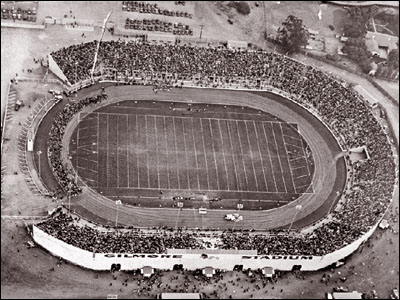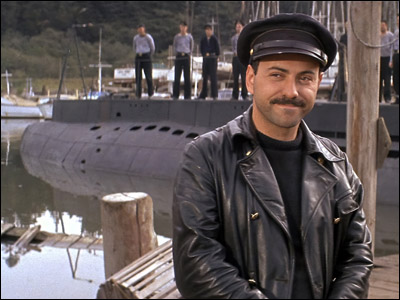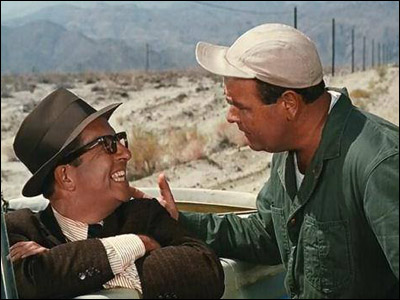Livio Sellone wrote me (several times) with this question…
In Garfield and Friends, why do some animals actually talk? I always thought that Garfield and other animals could never talk in the comic strips, but in Garfield and Friends, for some reason, Mark Evanier added actual talking animals. I'm talking about those awful Buddy Bears. They are shown to speak and able to communicate with both animals and humans. Can they talk, or it depends on the episode?
For example, in some episodes, Garfield can talk to humans, such as "The Legend of The Lake," but he usually can't speak to humans. Another animal character, such as Ichabod Cricket is shown to be understood by humans (in "Half Baked Alaska"), in fact, when he yells in Jon's ear, Jon can hear him. I've always wondered why they decided to add "talking animals" in the show, since Garfield's animals were never able to communicate with humans, and they rarely were understood by humans (In both comic strips and the show, sometimes Jon can hear Garfield, but it's usually, just a gag).
The answer, Livio, is that when you have to do 121 half-hour episodes, you find yourself breaking your own rules. The original working premise of the Scooby Doo cartoons was that all ghosts and unearthly creatures were hoaxes…and also, dogs could only mutter occasional words as long as Don Messick added an "R" sound at the beginning of each word. Then later, after umpteen episodes, they were looking for ways to "freshen" the show and not do the same unmasking-the-fake-ghost story line for the eighty zillionth time. So they added some relatives of Scooby, including Scrappy Doo, and allowed them to talk and they added in real ghosts and werewolves and such.
If the show had been canceled after Season Three or Season Four, they would have adhered to the original premises. Since the show goes on and on and on, the premises need to widen. It even works that way sometimes in live-action shows. My favorite TV sitcom is The Dick Van Dyke Show. When it started, the plan was that the audience would never see the star of the show Dick's character worked on. We'd never see Alan Brady.

Then the storyline in one episode seemed to need us to hear his voice so we heard his voice (provided by producer-creator Carl Reiner) but we didn't see him. Then there were stories that seemed to demand his presence in scenes so Alan Brady (Mr. Reiner, again) was seen but you only saw the back of his head. Then they came up with ideas for good episodes that needed us to see him for real so Reiner was seen on-camera in the role. What some people feel was the best episode ever of that series — "Coast-to-Coast Big Mouth" — wouldn't have worked if we'd only heard his voice or seen the back of his head.
In the case of Garfield, the original convention was that the cat didn't speak aloud. What we, as readers of the newspaper strip, read were his thoughts. His words were in thought balloons. And Odie the dog was so dumb that he didn't "think" at all so we never knew his thoughts. Furthermore, Garfield and his owner Jon were so close, Jon could sometimes intuit what Garfield was thinking.
That was fine for newspaper strip gags that were short enough to be done in three panels. When Garfield turned into a TV star in animated specials, they had to decide what to do about this "thoughts." For Peanuts, Charles Schulz and the producer decided that Snoopy would make sounds but would not have a voice. In some episodes, we heard Charlie Brown telling us what Snoopy was thinking, which worked pretty well. But Snoopy was not carrying the plots of those stories and, of course, they were much longer than your average daily (or even Sunday) newspaper strip.
For Garfield, Jim Davis and the producer (the same producer as the Peanuts specials, Lee Mendelson) decided that viewers needed to hear what Garfield was thinking. Garfield carried the storylines and the commentaries in his thoughts were a major feature of the strip. That was why Garfield's mouth didn't move. We were hearing his thoughts because he didn't talk but, again, Jon sometimes kind of guessed what Garfield was thinking.
Also, animals could hear each others' thoughts. Garfield could hear Arlene's thoughts and vice-versa. Garfield could even hear Odie's thoughts even though they weren't articulate enough to be translated into words we could understand. As more and more of the prime-time Garfield specials were done, more and more animals turned up and each could "hear" the others' thoughts.
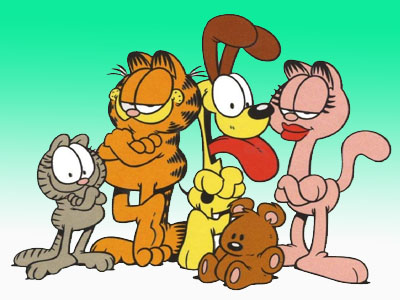
In 1987 when I was hired to write a weekly Garfield show for CBS Saturday mornings, we discussed all this. Jim Davis came out to Hollywood. I flew back to his studio in Muncie, Indiana. CBS asked that Jim consider having Garfield talk on this show. They didn't demand it; just ask that he consider it.
We talked a lot and finally decided to continue the policy that Garfield would not talk, per se, but we'd hear his thoughts. His lips would not move…which gave me the idea of having him say something different at the end of the opening titles of each episode. No lip movements meant it was very easy to change what he said there.
We also agreed I'd be adding a lot more animal characters here and there because, well, we had a lot more storylines to invent. The new animal characters could exchange thoughts like dialogue.
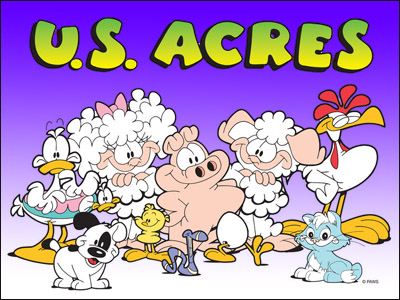
But there was another thing: The year before, Jim had started a second newspaper strip — U.S. Acres, which was also called Orson's Farm in some other countries. It was about a bunch of barnyard animals who definitely talked to one another with moving mouths. It was going to share the half-hour with Garfield…which is why the new series was Garfield and Friends. When it went on, it was such a hit that the next season, they were sharing an hour.
From the start, everyone wanted Garfield to occasionally pop up in a U.S. Acres cartoon to unite the two properties…so Garfield (who didn't talk) was intersecting with animals who did. It seemed to work fine. If anyone noticed, they didn't write in.
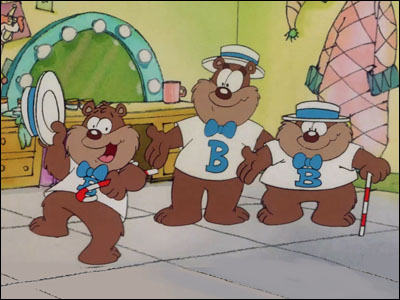
When I decided to add in the Buddy Bears, I decided to have their mouths move. There were three of them and if their mouths didn't move, you wouldn't have known which one was speaking. Also, the idea was that they were singing their song on TV shows and…well, I just decided it made them more effective as characters to talk. Yeah, it was kind of breaking our own rule but that's the great thing about making your own rules: If you make them, you can decide when to break them. We broke the rules a few other times as you note.
I do not recall anyone ever asking about this before or giving any indication that they noticed. And those shows have been running pretty continuously on television for thirty-five years now. We have literally gotten more mail from viewers who felt that Garfield was eating too much lasagna or who wanted to know what the deal was with The Klopman Diamond.
So I hope this answers your question, Livio. We made a rule and we decided to break it now and then for the good of the show. I hope you won't hold it against us.









